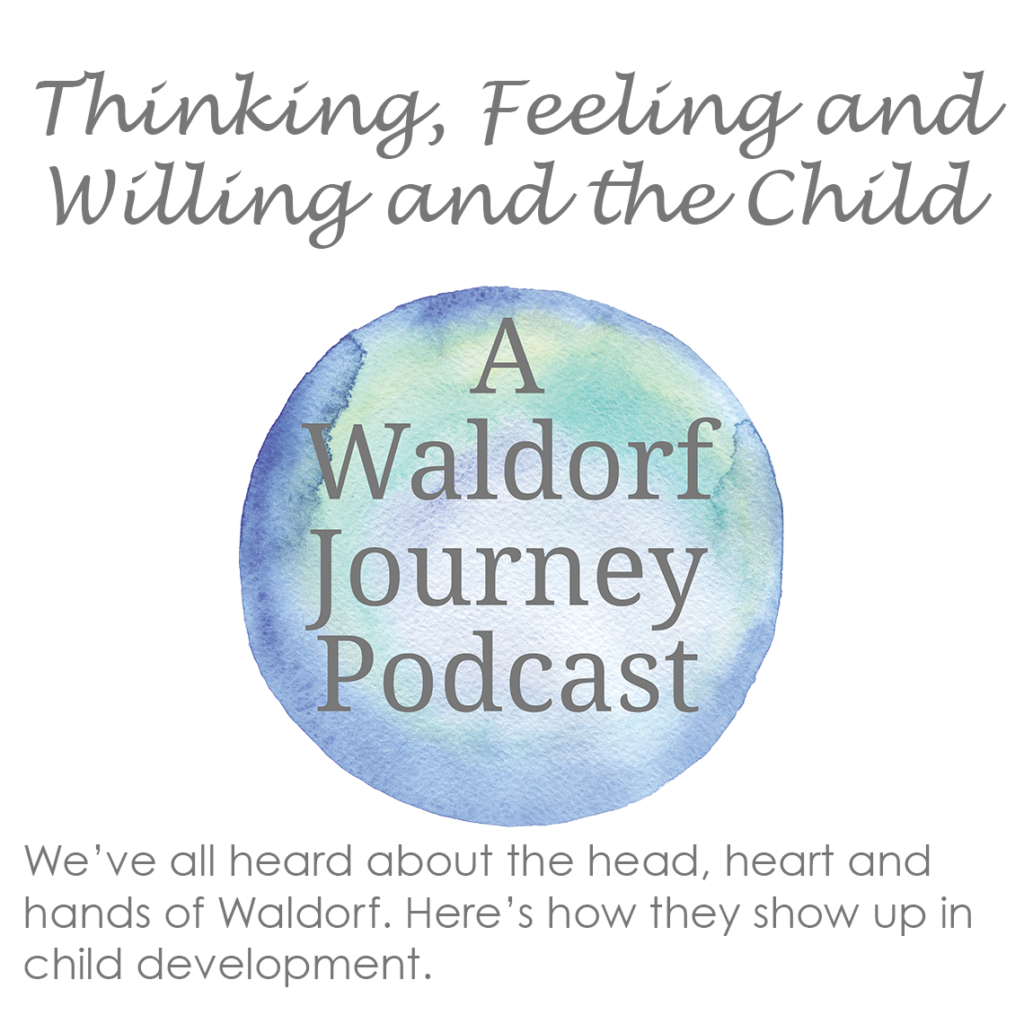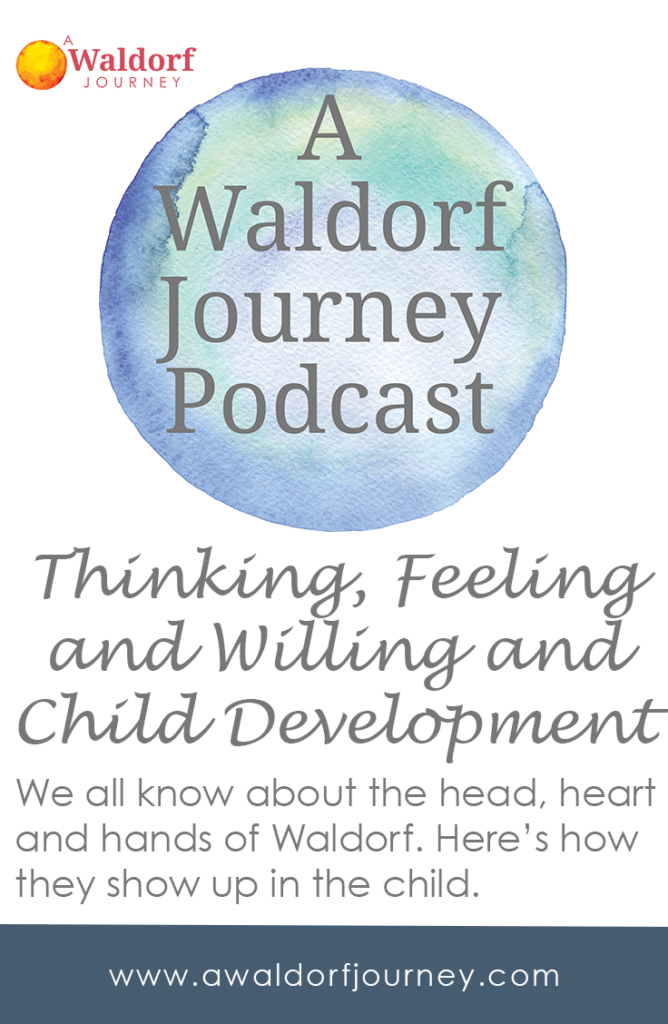This week we’re going to talk about child development. We’ve all heard about thinking, feeling, and willing of Waldorf education. This episode is all about where you can find thinking, feeling, and willing in child development and which aspect you should be focusing on when.
This episode is being brought to you by my curriculum guides, which you can find at my website awaldorfjourney.com/shop. I’ve got a variety of guides throughout the grades — Whether you’re teaching botany, rocks and minerals, physics or astronomy in the middle school; or consonants and vowels in first grade, I’ve got a guide that can help you out. Homeschoolers and classroom teachers in a variety of settings have found my guides to be helpful, so I hope you’ll check them out. And if you’re just wondering about how to go about setting up your main lesson structure, every guide includes my Main Lesson 101 material, which will break it all down for you. Just this information alone is really valuable, so you might consider purchasing a guide, just to help you get started with your planning. I really recommend either my Astronomy or my Rocks and Minerals guides — those subjects are just so fascinating and both of those guides give a really good picture of what it’s like to plan a Waldorf main lesson.
Again, you can find all of my guides at my website, www.awaldorfjourney.com/shop
Buy me a cup of coffee.
Instagram
Facebook

Content
0-7 — the willing phase
7-14 — the feeling phase
14-21 — the thinking phase
More information about my course The Practical Art of the Waldorf Classroom.
An image of the Waldorf approach to human development, sometimes called “the cosmic bathtub.”





Leave a Reply